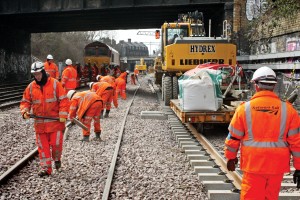Network Rail has pledged to improve services across the West and on the main Great Western line into London as it continues the biggest investment in the region’s railways since the Victorian era.
But it also warned that tough choices needed to be made if the industry is to meet the competing challenges of improving services for an ever-growing number of passengers while keeping costs down.
The company’s strategic business plan for the Western route between Paddington and Bath and on to Bristol, South Wales and the South West has been submitted to the Office of Rail Regulation.
Designed to respond to and cater for continuing growth in passenger numbers, Network Rail claims the plan sets o ut the biggest programme of improvements to the Great Western main line since it was built 175 years ago.
ut the biggest programme of improvements to the Great Western main line since it was built 175 years ago.
The number of passengers using the Great Western main line is now more than 50m a year, following a decade in which passenger numbers grew by 42%. This growth has led to severe overcrowding at the busiest times of day on many trains.
To meet this challenge and to provide the extra capacity needed to cater for a further 51% predicted increase in passengers over the next 30 years, Network Rail and rail industry partners will deliver an already-announced programme of electrification, signalling upgrades and new, longer trains over the 2014-19 period.
Network Rail route managing director Patrick Hallgate said: “Managing what is essentially a Victorian railway is becoming increasingly difficult and this programme of investment will bring it firmly into the 21st century.
“The improvements will deliver huge benefits to passengers but there will inevitably be trade-offs which need to be made to deliver them. As the railway gets busier, the number of challenges increase and it becomes more complex than ever to run a reliable and cost-effective railway. As a result, we will increasingly have to balance the needs to build and renew infrastructure, run trains on time and reduce costs.
“This plan will provide a bigger and better railway for passengers and help support and drive economic growth across the West. By the end of the decade, the Great Western main line will set the standard for 21st century rail travel in Britain and provide the capacity we need to cater for the continued increase in the popularity of rail travel.”
The main schemes affecting the Bath area are:
Modernising signalling – around 25,000 minutes of delays on average each year on the Great Western main line are potentially caused by problems with ageing signalling equipment.
Network Rail is resignalling the Great Western main line ahead of electrification, modernising equipment which dates back to the 1960s. This work will be carried out in stages to minimise disruption. By 2015, control of all signalling between London and Bristol will be carried out at a new signalling centre in Didcot.
Electrification and new trains – by December 2016, Network Rail plans to electrify the Great Western main line from Maidenhead to Bristol. Electrification will pave the way for electric trains which have more seats than the current diesel trains of the same length and are able to accelerate and brake more quickly, speeding up journey times. The new trains will be quicker, cleaner, quieter, smoother and more reliable than diesels trains. They are cheaper to operate, require less maintenance and have lower energy costs and carbon emissions than diesel trains. They are also lighter and do less damage to the track, helping to deliver a more reliable railway and reducing the need for track maintenance.
Network Rail is responsible for electrification through some of the most sensitive parts of the line, including the centre of Bath, and is working closely with local authorities and heritage agencies.


















